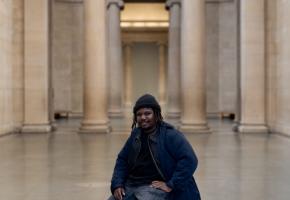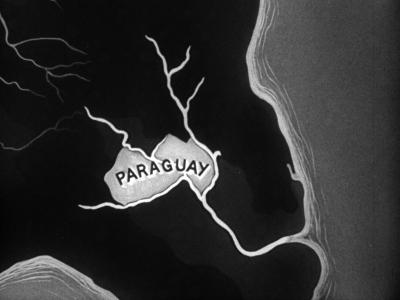Writing in The Guardian recently Marcio Siwi observed that ‘at its most basic level, pixação is about vanity, fame and self-promotion’ . While some pixadores stick to street level walls and pixação appears on everything from tunnels, and bus stops through to flyovers, the work that attracts most attention and derision is that which appears on skyscrapers and the many tall high rise concrete apartments that define the skyline of the central city. The most infamous pixadores are those that are prepared to scale these tall buildings. The taller the building the more of a challenge it represents, and the greater the prestige in tagging its upper levels.
To reach those upper levels, pixadores frequently work together in small crews or as pairs. They use window ledges as leverage (in the lexicon of pixação, this is called janelo de prédio according to Siwi) or they scale the buildings by holding onto external surge arrester cables (known as escalada). It is for this reason that urban geographer Teresa Caldeira calls pixação ‘urban alpinism’ (Caldeira, 2008). Pixadores are willing to risk life and limb, affixing their paint rollers to broomsticks, and dangling their bodies over the edges of rooftops to tag ‘hard-to-reach’ areas.
The ‘Meaning’ of Pixação
The symbols (called pixos) produced by pixadores are seen as being empty of any political meanings by mainstream media commentators. It is certainly the case that pixos are mainly ‘signatures’ referencing individuals and crews rather than political statements. Besides, as François Chastanet acknowledges, pixação is not designed to be read, only to be seen (Chastanet, 2005). The photographer Choque Photos, interviewed in João Wainer and Robert T. Oliveira’s documentary Pixo, notes that pixaçãois a system of ‘closed communication’ whose vocabulary is known only to the pixadorea themselves and which purposefully ‘doesn’t communicate with the rest of society’ (Pixo, 2010).
Other critics suggest, however, that the pixos are actually pregnant with meaning but that one needs to look beyond the letters themselves to see this. In pixação, it is very much a question of location. It is the positioning of the pixo rather than necessarily the pixo itself that renders it political. The prominence of the pixo and the status it confers on the pixador means that the symbol stands as a symbol of empowerment. For its practitioners, pixação is about rendering those who are invisible, visible within the central city. The sheer volume and prominence of pixação within the centre means that pixadores are not only visible they are hyper-visible. Pixadores target spaces and buildings within the centre that, as Colin Snider puts it, are ‘economically and politically out of reach for them’ (Snider, 2012).
The Roots of Pixação
Protest graffiti in Brazil is not new. Political messages written in tar (the word pixação is etymologically derived from the Portuguese verb ‘pichar’ - to tar) appeared on walls during the 1940s and 1950s. Today’s runic pixação emerged in the city during the 1980s, a time of political turmoil within Brazil. The country was transitioning from a dictatorship to a democracy. Cultural forms that were seen as threatening by the military dictatorship started to come to the fore as Brazil opened up and the military started to loosen its grip over Brazilian society.
The 1980s was also the decade in which heavy metal - itself a form that trades on youthful disaffection and alienation - started to make significant inroads into Brazil. Young Paulistanos from the margins of the city were inspired by the Scandinavian and gothic-style runic typefaces used by heavy metal bands such as Judas Priest, Led Zeppelin, Motörhead, Iron Maiden and AC/DC, and punk and hardcore acts such as The Exploited and The Dead Kennedy’s on their album covers. Pixadores took the lettering used by these bands, and ‘cannibalised’ them. In doing so, these pixadores rendered these runic typefaces distinctively Brazilian.

Pixação, Street Art and the Authorities
Pixação is often viewed as a counterpoint to street art. It is certainly much cheaper to practice. Manco calls it a ‘no budget medium’ (Manco, 2005: 27). Whereas street art has been legitimised, pixação remains fundamentally transgressive and illegal. It’s this illegality that sustains the form. As noted pixador and pixação’s main spokesperson Djan Ivson aka Cripta Djan states in Pixo ‘Pixo is illegal, and that’s the essence, bro. If it was legal, nobody would do that. If it was like graffiti, it wouldn’t even exist. That’s the essence, the anarchy, the prohibited thing’ (Pixo, 2010).
For both its many critics and its far fewer supporters, pixação stands as an affront to the city and to paulistano modernity. In São Paulo, modernity is indexed through the city’s landscape which is dominated by shopping malls, hotels, cultural centres, and the skyscrapers targeted by pixadores. Whereas Rio de Janeiro is a city that is associated in the cultural imagination with tropicality and the exotic (symbolised by samba and carnival, and indexed through the moniker the ‘marvelous city’), São Paulo - the economic heart of the country - is seen as far more pragmatic, hard-headed and business-driven.
São Paulo’s authorities view pixação as a wanton act of vandalism that needs to be eradicated. It is also seen as irrational. Why, the city authorities asks, would anyone want to deface the city in this way? This is conveyed in the city authorities’ declarations and in the city’s media (Folha de S. Paulo for example). Pixação is framed as a disease that is polluting the city’s environs and is degrading the quality of life of paulistanos. In response, pixadores ask: ‘what quality of life?’ For Cripta Djan, the city does everything it can to exclude the poor and is actively ‘hostile to anyone who is not rich’ (Snider, 2012). Pixação is a response from the margins to economic exclusion, and to rampant social inequality.
Interviews with pixadores reveal a nihilistic sensibility underpinning the form which is akin to that found in certain strands of hip hop music and culture (gangsta rap for example). Consider this comment from Djan: ‘We just don’t give a fuck you know. We get there, and there is a bunch of rich guys, assholes, and a bunch of hypocrites. We come up there and do what we gotta do, no shame. And if someone says anything, we argue, and if we have to, we’ll back them up you know? We argue back, we do argue. It’s about facing them you know? We don’t care. Pixador flash it to everyone. It’s pure anarchy, it’s hate, y’know’ (Pixo, 2010).
Djan’s comment betrays the irrationality mentioned above. At the same time, it is easy to understand why the poor feel so alienated from the city in which they live. São Paulo is a city in which rich and poor can live in extremely close proximity. This is due to the way in which the city has developed in the last thirty years or so. Caldeira notes that wealthy paulistanos vacated the city centre during the 1980s and 1990s as violent crime increased. The wealthy retreated into fortified enclaves, characterised by surveillance, private security guards and defensive architecture (Caldeira, 2000: 213).
At the same time, the poorer groups that inhabited areas in which the enclaves were built did not move out. They stayed. In and of itself this is not a bad thing. However, it is hard to calculate the psychological impact of being confronted by wealth every day. That wealth is not necessarily flaunted; instead it is hidden behind walls. These enclaves are constructed in such a way that they tend to look inwards rather than looking out to the wider world. Through the architecture of the enclave, the rich have quite literally turned their backs on the poor.

Pixação and the Discourse of Cleanliness in São Paulo
According to Marcia Tiburi, cleanliness has taken on the status of an ideology. It is used to distinguish between modern and non-modern spaces in the city (Tiburi, 2015). The city has embarked on a crusade to clean the city up, and has launched a number of initiatives to help. OperaçãoLimpa - Operation Clean - launched in 2006, under the auspices of then-Mayor José Serra, sought to revitalise the city centre by targeting signs of urban decay - the homeless, informal street vendors and the addicts that inhabited Crackolândia - and ‘visual intrusions’ - billboards, advertisement and graffiti as well as pixação. The following year, the city enacted Lei 14.451, the Antipichação Programme in the Municipality of São Paulo, which sought the ‘recuperation of façades of public and private real estate which has been scribbled on’. (Larruscahim and Schweizer, 2015: 18).
Critics have drawn parallels between these and some of the hygienist measures that were applied within the city during the late nineteenth century and the early twentieth century when São Paulo underwent a significant remodeling. Like Brazil’s other great metropolis Rio de Janeiro, São Paulo’s regeneration during this period took its cue from Baron Haussman’s remodeling of Paris.
This included the construction of large boulevards, the destruction of working class areas of the city and the embellishment of the city through the construction of prominent public buildings (Perry, 2000: 122).
As with Paris, city planners in São Paulo justified the destruction of working class areas on the grounds that such areas were petri dishes of disease. In the minds of the rich, disease and lack of sanitation were intrinsically linked to immorality and criminality. Caldeira observes that the city’s ‘elite diagnosed the city’s social disorders in terms of disease, filth and promiscuity, all ideas soon associated with crime’ (Caldeira, 2000: 216).Whereas hygienist policies implemented in the early republic were about controlling actual disease and exercising control over the ‘dangerous classes’, the policies implemented by the city’s authorities have been about controlling what Caldeira calls the ‘mass of signs’ that the city government believe are polluting the city (Caldeira, 2013).
Eradicating Pixação, Targeting Pixadores
In their paper ‘Pixação, hygienizing policies and difference in São Paulo’, Paula Larruscahim and Paul Schweizer identify two elements in the city’s eradication policies. The first is grey painting whereby pixação is painted over. Each of São Paulo’s 31 districts has an antipichão truck that traverses the district to which it is assigned. The second approach is, in many ways, more interesting and imaginative in that it involves using street art as a means of countering pixação (Larruscahim and Schweizer, 2015: 17). The utilisation of street art as a means of prettifying the urban landscape is predicated on an unwritten code that suggests that once a wall or space has been taken by an artist, it is disrespectful to tag over it (Araya López, 2015: 157).
This unwritten code has not always been adhered to however. March 2010 saw a group of pixadores tag a mural produced by Os Gêmeos, Finck, Nunca, Nina and Zefix for which they had been paid a commission of R$200,000. Unusually, the tag included a political statement - ‘$200,000 em maquia gem e a cidade em calamidade’ - ‘$200,000 for make-up while the city faces calamity’ (Gupta, 2015: 42). Such an act points to and signals certain tensions between ‘legitimate’ street artists and ‘illegitimate’ pixadores. There is a discourse of authenticity at work here in which the latter comes to the former as having ‘sold out’ in some way.
There is a third aspect to pixação’s eradication, and it involves the often brutal actions of the police. Documentaries often feature pixadores recounting accounts of police brutality against them. Police actions have included beatings, and getting pixadores to drink their own paint. Pixadores have also been subjected to the so-called ‘ink shower’ whereby the police paint the pixadores bodies using the pixadores own paint (Larruscahim and Schweizer, 2015: 17).
The Appropriation of Pixação
Pixação has garnered a lot of attention in recent years, and has become increasingly commodified – even if many pixadores remain excluded from consumer culture within Brazil and pixadores themselves have not been involved in the commercialisation of the form (Gupta, 2015: 44). Pixação has entered the cultural consciousness of Brazilians and non-Brazilians through marketers, advertisers, sportswear brands and filmmakers. When, for example, Nike engaged the street artist Nunca to help design a range of sportswear, the designs he came up with featured the word ‘Brasil’ written in a typeface that was evidently influenced by pixação.
Nunca's pixacao-inspired range of sportswear for Nike. Source: Wikimedia Commons
Nunca’s utilisation of pixação is indicative of the way in which street artists have incorporated pixação stylings into their artistic lexicon. Indeed, the grapixo form is precisely a hybrid of graffiti and pixação. Even Brazil’s most famous street artists, Os Gêmeos (Octavio and Gustavo Pandolfo) have adopted pixação’s runic style lettering. Their work ‘São Paulo - Terra de Ninguém’ - ‘São Paulo - No Man’s Land’, which they painted all over the city stands as the clearest example of the Pandolfo Twins’ engagement with pixação.
There is also evidence that pixação, like street art before it, is being assimilated into the art world. Several galleries in São Paulo feature pixação, and pixadores have been taken to art fairs and festivals including the Berlin Biennial. They have also been invited to conferences at prestigious universities including Yale University in the United States. Even so tensions with the art establishment clearly remain. Indeed, pixadores have actively resisted the appropriation of pixação by the art establishment within Brazil. The São Paulo biennial, the city’s Centro Universitário Belas Artes and the Choque Cultural gallery have all been ‘attacked’ by pixadores (Araya López, 2015: 133).
While some pixadores at least have apparently been more willing to engage with the art world beyond Brazil, here too there have been tensions. When the pixadores invited to the 7th Berlin Biennial attempted to tag the venue that their talk was due to be given in - the Saint Elisabeth church which dates to the 1830s - the organisers and the audience were less than impressed and there were angry exchanges between the pixadores, audience members, and the curator of the festival, Artur Žmijewski.
While the organisers had clearly thought that inviting pixadores to Berlin would lend the biennial a certain ‘edge’, the actions of the pixadores were too much for the organisers and audience to swallow. As Suman Gupta writing in Wasafiri notes ‘however adventurous an event such as the Berlin Biennial might be, however open to the freedoms and subversions of art, however sympathetic to diverse expressions from "the lower class" of the world, there were certain boundaries that couldn’t be crossed’ (Gupta, 2015: 40). The pixadores from São Paulo had seemingly crossed them, by failing to adhere to what the middle class art world understands as ‘acceptable behavior’. Clearly, however, the pixadores understood their role at the biennial differently and were operating according to a different code of behavior. They simply attempted to do what it is they do - tag buildings.
Pixação: Where next?
On one level appropriation by the mainstream has the effect of rendering pixação safe. Pixação loses some of its power and its transgressive qualities when it is removed from the streets and when it enters the space of the gallery or when it is adopted by marketers and advertising executives to sell products. Given this, it is easy to see why pixadores would be willing to target and ‘bomb’ such sites of appropriation.
Whatever the interest shown by advertisers and the like in pixação it remains resolutely transgressive. It continues to constitute a two finger salute to the city’s authorities and the Paulistano wealthy. While it is true that street art which today is a key part of beautification strategies was once seen as ‘visual pollution’, it is hard to imagine pixação undertaking a similar journey. Pixação remains omnipresent within São Paulo and continues to be viewed as a scourge by ‘respectable’ society. The fight against it continues, though as an un-named police officer states in Manco’s Graffiti Brasil, taking on pixação ‘is like enxugar gelo - trying to dry ice cubes’ (Manco, 2005: 31).
At root, pixação speaks to the alienation felt by large numbers of youths who live at the city’s edges and margins. Journalist Gilberto Dimenstein sums up where the pixadores are coming from: ‘They’re individuals that, as many Brazilians, suffer from the invisible’s syndrome. What makes them tag is the desire to say: "I exist, I’m here, I want people to look at me, I want to contribute"’ (Pixo, 2010).

















